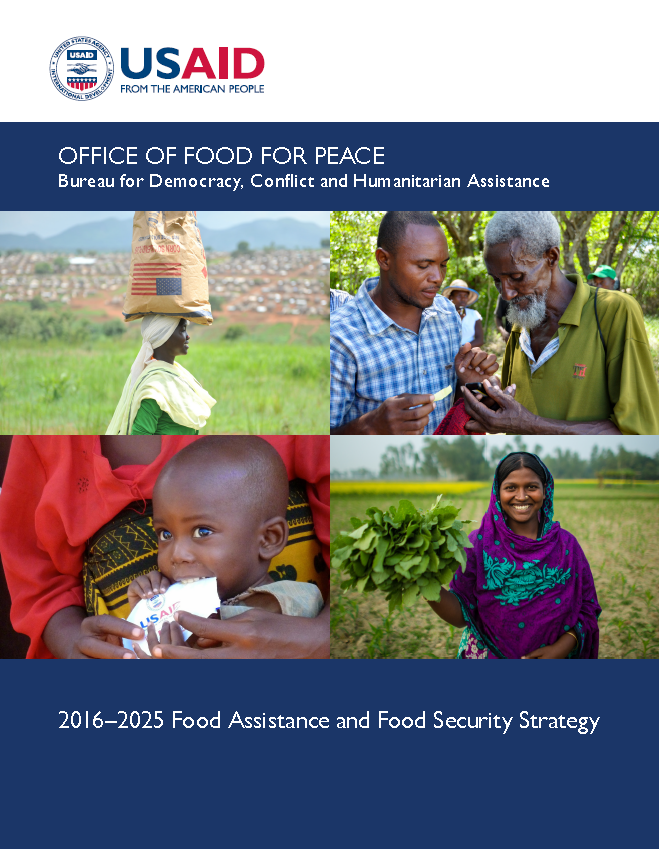- What We Do
- Agriculture and Food Security
- Democracy, Human Rights and Governance
- Economic Growth and Trade
- Education
- Ending Extreme Poverty
- Environment and Global Climate Change
- Gender Equality and Women's Empowerment
- Global Health
- Water and Sanitation
- Working in Crises and Conflict
- U.S. Global Development Lab

USAID's food assistance provides life-saving food assistance to vulnerable populations and reduces hunger and malnutrition so that all people at all times have access to sufficient food for healthy and productive lives.
USAID predicts, prevents, and responds to hunger overseas. Through its emergency food assistance activities, USAID saves lives, reduces suffering, and supports the early recovery of people affected by conflict and natural disaster emergencies. USAID’s development food assistance activities equip people with the knowledge and tools to feed themselves, address the underlying causes of hunger, and reduces the need for future food assistance. Alleviating global hunger is critical to national security: where hunger persists, instability grows. By supporting the world's most vulnerable, USAID is building a more stable world and ensuring that people have the opportunity to lead healthy, productive lives.
Food Assistance in Action:
- USAID is also responding to the needs of the more than 20 million people facing severe hunger or starvation in Lake Chad Basin, Yemen, Horn of Africa and South Sudan. We and our partners are delivering live-saving food assistance, as well as emergency health and nutrition services, to help people facing severe food insecurity in these countries. Read more. For specific information on our food assistance in these countries, visit our Country Fact Sheet page.
- Evidence from our programs in Bangladesh has shown that one of the more successful ways food assistance programs can tackle chronic hunger and poverty is by looking beyond food. Read more.
- Changes in the Agricultural Act of 2014 mean new flexibilities for Food for Peace. To see how Food for Peace has incorporated these changes to Section 202(e) resources in its programming, read these stories.
- The United States is currently the largest donor of food assistance to Syria. USAID-funded programs help feed millions of refugees and internally displaced persons affected by the crisis in and around Syria. USAID works with the UN World Food Program (WFP) and other partners to most effectively deliver this lifesaving aid. Click here to see how USAID is supporting Syrian refugees in Jordan. Or click here to see how one Syrian in Jordan is helping children get back in school.
We are providing more effective food assistance:
- Building on the latest in nutrition science, our in-kind food products are being reformulated and new products are being added to better meet the nutritional needs of vulnerable populations around the world.
- USAID has adopted a state-of-the-art supply-chain management system that allows us to preposition food strategically, significantly reducing the amount of time it takes to reach people in need.
- In-kind foods are complemented by a cash-based emergency food security program that allows USAID to buy some food locally and regionally. The cash program also allows USAID to support interventions that enable hungry people to access local markets.
- These tools are directed with the help of a state-of-the-art early-warning system that applies remote monitoring techniques with in-country data gathering and analysis in key food insecure locations. Today the USAID funded Famine Early Warning Systems Network (FEWS NET) is one of the most highly regarded early-warning systems in the world.









Comment
Make a general inquiry or suggest an improvement.